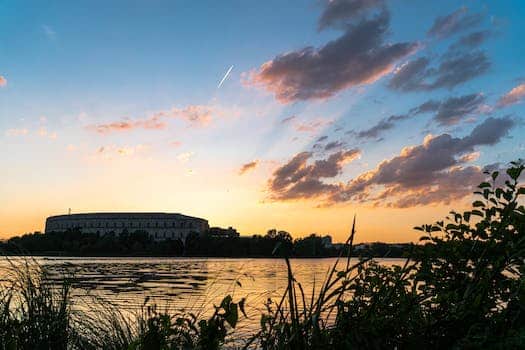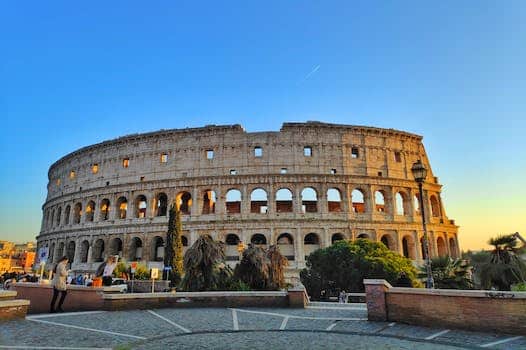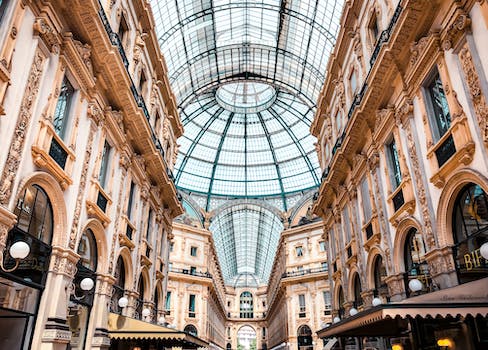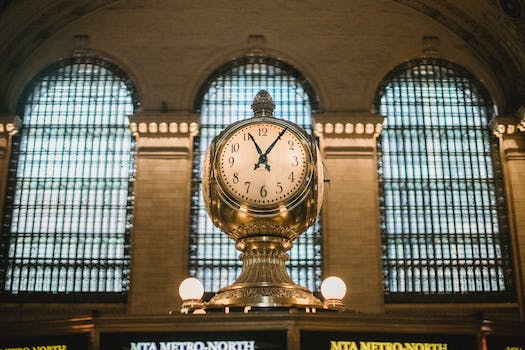Preserving historical landmarks is not only a matter of cultural significance, but also an opportunity to adopt eco-friendly approaches. In an era where sustainability is paramount, it is essential to find innovative methods that minimize environmental impact while safeguarding these precious sites. This article explores a range of eco-friendly approaches that can be employed to ensure the long-term preservation of historical landmarks, ultimately preserving our rich heritage for future generations.
- 1. Introduction
- 1.1. Importance of preserving historical landmarks
- 1.2. The concept of eco-friendly preservation
- 1.3. Benefits of eco-friendly preservation
- 2. Methods of Eco-friendly Preservation
- 2.1. Using sustainable materials
- 2.2. Implementing energy-efficient systems
- 2.3. Promoting biodiversity in the surroundings
- 2.4. Reducing water consumption
- 2.5. Adopting eco-friendly waste management
- 3. Challenges and Solutions
1. Introduction
Preserving historical landmarks is not only crucial for maintaining our cultural heritage but also for the environmental sustainability of our planet. As awareness about the impacts of climate change and human activities on the environment grows, it becomes imperative to adopt eco-friendly approaches in the preservation of these significant landmarks. By embracing sustainable practices, we can ensure the long-term protection and conservation of historical sites while minimizing our ecological footprint. In this article, we will explore various eco-friendly approaches that can be employed to preserve and safeguard these invaluable historical landmarks.
1.1. Importance of preserving historical landmarks
Preserving historical landmarks is of utmost importance for several reasons. These landmarks are not just physical structures; they hold great cultural, historical, and educational value. They are a testament to our past, reminding us of our roots, heritage, and the events that shaped our present. Historical landmarks connect us to our ancestors and provide a sense of identity and belonging.
Additionally, preserving historical landmarks helps promote tourism and economic growth. Many tourists are drawn to these sites to learn about different cultures and experience the rich history they offer. This influx of visitors can have a positive impact on local businesses, creating jobs and boosting the economy.
Furthermore, these landmarks serve as educational resources for future generations. They provide a tangible link to the past, allowing people to learn about historical events, architectural marvels, and the cultural significance of different periods. By preserving these landmarks, we ensure that knowledge and understanding of our history are passed down to future generations.
In conclusion, preserving historical landmarks is crucial for maintaining our cultural heritage, promoting tourism, and providing educational opportunities. It is our responsibility to protect and conserve these sites for the benefit of present and future generations.
1.2. The concept of eco-friendly preservation
Preserving historical landmarks is not only about maintaining their physical structures but also about ensuring the sustainability and eco-friendliness of these sites. In recent years, there has been a growing emphasis on adopting environmentally friendly approaches to preserve historical landmarks. This approach, known as eco-friendly preservation, takes into account the impact of preservation activities on the environment and aims to minimize any negative effects. By integrating sustainable practices into the preservation process, we can ensure that these landmarks continue to be enjoyed by future generations while minimizing our ecological footprint.
1.3. Benefits of eco-friendly preservation
Preserving historical landmarks is of utmost importance as it allows us to conserve our rich cultural heritage for future generations. However, the conventional preservation methods often involve the use of harmful chemicals and materials that negatively impact the environment. This is where eco-friendly approaches to preservation come into play. By implementing sustainable and environmentally conscious practices, we can not only protect our historical landmarks but also contribute to the overall well-being of our planet. In this article, we will explore the numerous benefits of adopting eco-friendly preservation methods for historical landmarks.
2. Methods of Eco-friendly Preservation
Historical landmarks hold immense cultural and historical significance, and it is crucial to preserve them for future generations. However, the preservation process should be carried out in an eco-friendly manner to minimize any negative impact on the environment. There are several methods of eco-friendly preservation that can be employed to protect and conserve these precious landmarks.
One method is the use of sustainable building materials during restoration or renovation projects. Instead of using materials that deplete natural resources or emit harmful pollutants, eco-friendly alternatives can be utilized. For example, reclaimed wood can be used for flooring or structural elements, reducing the need for new timber and minimizing deforestation.
Another approach is the implementation of green energy solutions. Historical landmarks often require electricity for lighting, climate control, and other purposes. By adopting renewable energy sources such as solar or wind power, the environmental footprint can be significantly reduced. Solar panels can be discreetly installed on rooftops or nearby areas, generating clean energy without compromising the integrity of the landmark.
Furthermore, eco-friendly preservation involves the careful management of water resources. Historical landmarks may have gardens, fountains, or water features that require regular irrigation. Efficient water conservation techniques like drip irrigation systems can be employed to minimize water wastage. Additionally, the use of native plants in landscaping helps maintain the natural biodiversity of the area while reducing the need for excessive watering and chemical fertilizers.
Preserving historical landmarks in an eco-friendly manner also requires proper waste management. Construction and maintenance activities generate significant amounts of waste. Recycling and proper disposal of construction debris, packaging materials, and other waste products are essential to minimize the environmental impact. Implementing recycling programs, promoting composting, and encouraging the use of biodegradable products can contribute to a more sustainable preservation process.
In conclusion, adopting eco-friendly preservation methods is crucial for safeguarding our historical landmarks while minimizing harm to the environment. By utilizing sustainable building materials, incorporating green energy solutions, managing water resources efficiently, and implementing proper waste management practices, we can ensure the preservation of these valuable cultural treasures for generations to come.
2.1. Using sustainable materials
Using sustainable materials is crucial when it comes to preserving historical landmarks in an eco-friendly manner. By utilizing materials that are renewable and have a minimal impact on the environment, we can ensure the longevity of these precious sites while also minimizing our carbon footprint.
One effective method of eco-friendly preservation is the use of reclaimed or recycled materials. Instead of relying on newly sourced materials, repurposing existing resources helps reduce waste and limits the need for further extraction or production. For instance, using reclaimed wood for restoration projects not only adds a unique character to the landmark but also prevents the cutting down of more trees.
Another approach is to opt for natural and locally sourced materials. By using materials that are readily available in the surrounding area, we can minimize transportation-related emissions and support local economies. For example, using locally quarried stone for repairs or reconstruction not only reduces the carbon emissions associated with long-distance shipping but also helps preserve the authentic aesthetic of the historical site.
Furthermore, choosing materials with a low environmental impact is essential. This includes prioritizing materials that are non-toxic, recyclable, and energy-efficient. For instance, using eco-friendly paints and coatings not only helps protect the historical structure but also minimizes the release of harmful chemicals into the environment.
In conclusion, employing sustainable materials and eco-friendly preservation methods is vital for the long-term conservation of historical landmarks. By embracing these approaches, we can ensure the preservation of our cultural heritage while also minimizing the negative impact on our planet.
2.2. Implementing energy-efficient systems
Implementing energy-efficient systems is a crucial aspect of eco-friendly preservation methods for historical landmarks. By utilizing sustainable technologies and practices, we can ensure the long-term conservation of these valuable heritage sites while minimizing their impact on the environment. Here are some effective methods for implementing energy-efficient systems:
1. Lighting Upgrades: Replacing traditional incandescent bulbs with energy-efficient LED lights can significantly reduce electricity consumption. LED lights are not only more durable and long-lasting but also consume less energy, leading to substantial energy savings.
2. Insulation Improvements: Enhancing the insulation of historical buildings can help regulate indoor temperature, reducing the need for excessive heating or cooling. Implementing insulation materials with high R-values and sealing any air leaks can contribute to energy conservation.
3. Renewable Energy Integration: Installing renewable energy systems such as solar panels or wind turbines can generate clean, sustainable power for historical landmarks. These systems harness natural resources and convert them into electricity, reducing reliance on fossil fuels and minimizing carbon emissions.
4. Efficient HVAC Systems: Upgrading heating, ventilation, and air conditioning (HVAC) systems with energy-efficient models can significantly decrease energy consumption. By incorporating advanced technologies like programmable thermostats, HVAC systems can be optimized to operate only when necessary, resulting in energy savings without compromising comfort.
5. Water Conservation Measures: Implementing water-efficient fixtures and technologies, such as low-flow toilets and sensor-activated faucets, can reduce water consumption in historical landmarks. This not only helps preserve the natural resource but also decreases the energy required for water treatment and distribution.
By implementing these energy-efficient systems, we can preserve historical landmarks in a sustainable manner, ensuring their cultural significance for future generations while minimizing their environmental impact.
2.3. Promoting biodiversity in the surroundings
Promoting biodiversity in the surroundings is an essential aspect of eco-friendly preservation. By focusing on preserving and enhancing the local ecosystem, we can contribute to the overall health and sustainability of the environment. There are several methods that can be employed to promote biodiversity in the surroundings.
One approach is to create and maintain green spaces within the vicinity of historical landmarks. These green spaces can serve as habitats for various plant and animal species, providing them with a safe and thriving environment. By incorporating native plants and trees, we can attract more diverse wildlife and support the natural food chain.
Another method is to implement sustainable landscaping practices. This includes using organic fertilizers, minimizing the use of pesticides, and conserving water through efficient irrigation systems. By adopting these practices, we can reduce the negative impact on the environment and create a more balanced ecosystem.
Furthermore, educating the local community about the importance of biodiversity is crucial. By organizing workshops, seminars, and awareness campaigns, we can raise awareness about the significance of preserving the natural heritage around historical landmarks. This can encourage individuals to actively participate in conservation efforts and adopt eco-friendly practices in their daily lives.
In conclusion, promoting biodiversity in the surroundings is a key component of eco-friendly preservation. By utilizing methods such as creating green spaces, implementing sustainable landscaping practices, and raising awareness, we can contribute to the preservation of historical landmarks in an environmentally conscious manner.
2.4. Reducing water consumption
Reducing water consumption is an essential aspect of eco-friendly preservation for historical landmarks. By implementing various methods, we can ensure the sustainable management of water resources while still maintaining the integrity of these significant sites. Here are some effective approaches to reducing water consumption in historical landmarks:
2.5. Adopting eco-friendly waste management
Adopting eco-friendly waste management is essential for preserving historical landmarks. By implementing sustainable methods, we can ensure the longevity of these significant sites while minimizing the negative impact on the environment. There are several approaches to eco-friendly waste management that can be employed in the preservation of historical landmarks:
3. Challenges and Solutions
Preserving historical landmarks is a crucial task that requires careful consideration of eco-friendly approaches. However, there are several challenges that one may encounter in the process. One of the major challenges is the deterioration of the materials used in the construction of these landmarks over time. Exposure to natural elements, pollution, and human activities can cause significant damage to the structures. Another challenge is the increasing pressure of tourism on historical sites, resulting in overcrowding and potential harm to the environment.
To tackle these challenges, it is essential to implement sustainable solutions. One solution is to conduct thorough research and analysis of the materials used in the construction. This helps in identifying the most suitable preservation methods that are environmentally friendly. Additionally, employing innovative technologies such as 3D scanning and modeling can aid in the restoration process without causing harm to the environment.
Another effective solution is to promote responsible tourism by implementing strict regulations and visitor limits. This ensures that the historical landmarks are not overwhelmed by the influx of tourists, allowing for a more sustainable preservation approach. Furthermore, educating visitors about the significance of these landmarks and the importance of preserving them can help create a sense of responsibility and awareness.
Overall, preserving historical landmarks using eco-friendly approaches poses its challenges, but with careful planning and implementation of sustainable solutions, we can ensure the protection and longevity of these invaluable treasures.
3.1. Balancing preservation and modern needs
Preserving historical landmarks is a delicate task that requires a careful balance between maintaining the integrity and authenticity of the site while meeting the demands of modern needs. This presents a number of challenges that need to be addressed in order to ensure the successful preservation of these valuable landmarks.
One of the main challenges is finding ways to adapt historical landmarks to modern requirements without compromising their historical significance. For example, many historical buildings were not designed to accommodate large numbers of visitors or modern amenities such as electricity and plumbing. Finding solutions to integrate these modern needs without detracting from the historical value of the site is crucial.
Another challenge is the impact of environmental factors on the preservation of historical landmarks. Climate change, pollution, and natural disasters can all pose significant threats to the structural integrity and longevity of these sites. Developing eco-friendly approaches to counteract these challenges is essential in order to ensure the long-term preservation of historical landmarks.
Furthermore, funding and resources are also major challenges in the preservation of historical landmarks. Restoration and maintenance projects can be expensive, and finding sustainable funding sources can be a daunting task. Collaborating with governmental organizations, private investors, and the local community can help address these challenges and secure the necessary resources for the preservation efforts.
In conclusion, preserving historical landmarks requires a delicate balance between preserving their historical value and meeting the demands of modern needs. Overcoming challenges such as adapting to modern requirements, mitigating environmental impacts, and securing adequate funding are crucial in ensuring the successful preservation of these invaluable sites.
3.2. Funding for eco-friendly preservation
Funding for eco-friendly preservation is a major challenge faced in the effort to protect and maintain historical landmarks using sustainable approaches. While there is growing awareness and demand for eco-friendly preservation methods, limited financial resources often hinder the implementation of such practices. The costs associated with researching and implementing eco-friendly techniques, such as using environmentally friendly materials and employing skilled labor, can be significantly higher compared to traditional preservation methods.
One solution to address the funding challenge is to seek financial support from various sources. Governments, non-profit organizations, and private donors can play a crucial role in providing grants, sponsorships, and funding opportunities specifically dedicated to eco-friendly preservation projects. Collaborating with these entities can help secure the necessary funds to carry out environmentally sustainable preservation efforts.
Another solution is to explore alternative revenue streams. Historical landmarks can leverage their cultural and historical significance to attract tourists and generate income. By offering guided tours, hosting events, and partnering with local businesses, these landmarks can generate additional revenue that can be allocated towards eco-friendly preservation initiatives.
Furthermore, raising public awareness and garnering support for eco-friendly preservation can also contribute to securing funding. Educating the public about the importance of sustainable preservation practices and their positive impact on the environment can help generate public interest and support. This, in turn, can lead to increased funding opportunities through public donations and crowdfunding campaigns.
In conclusion, while funding for eco-friendly preservation poses challenges, various solutions can be pursued to overcome these obstacles. By seeking financial support from multiple sources, exploring alternative revenue streams, and raising public awareness, the goal of preserving historical landmarks using sustainable approaches can be achieved.
3.3. Engaging local communities
One of the significant challenges in implementing eco-friendly approaches to preserving historical landmarks is engaging local communities. It is essential to involve the local residents and stakeholders in the decision-making process to ensure the success and sustainability of any conservation project.
However, engaging local communities can be a complex task. Many factors can hinder their participation, such as lack of awareness, apathy, or skepticism towards eco-friendly initiatives. Additionally, there may be conflicting interests or misunderstandings between the preservation efforts and the local community’s needs.
To overcome these challenges, several solutions can be implemented. Firstly, effective communication and education campaigns should be conducted to raise awareness about the importance of preserving historical landmarks using eco-friendly methods. This can be done through various mediums, such as workshops, seminars, or community meetings.
Furthermore, it is crucial to actively involve the local community in the planning and decision-making process. This can be achieved by forming advisory committees or task forces consisting of community representatives, historians, conservation experts, and local government officials. By including diverse perspectives and expertise, a more inclusive and sustainable approach can be developed.
Another solution is to provide tangible benefits to the local community. This can be in the form of job opportunities, vocational training programs, or economic incentives. By demonstrating how eco-friendly preservation efforts can positively impact the local economy and quality of life, the resistance or indifference towards such initiatives can be minimized.
In conclusion, engaging local communities is a vital aspect of implementing eco-friendly approaches to preserving historical landmarks. Although it can be challenging, through effective communication, active involvement, and providing tangible benefits, these challenges can be overcome. By fostering a sense of ownership and pride among the local residents, we can ensure the long-term conservation and sustainability of our precious historical sites.
3.4. Addressing climate change impacts
Climate change poses significant challenges to the preservation of historical landmarks. The impacts of rising temperatures, extreme weather events, and sea-level rise are already being felt in many parts of the world, threatening the long-term survival of these cultural treasures. Historical landmarks, often built with materials and techniques that are sensitive to environmental conditions, are particularly vulnerable to the effects of climate change.
One of the major challenges is the increased risk of deterioration and damage caused by extreme weather events. Storms, hurricanes, and heavy rainfall can lead to flooding, erosion, and structural instability, all of which can have devastating effects on historical landmarks. Additionally, rising temperatures can accelerate the decay of building materials, such as stone and wood, further compromising the integrity of these structures.
Another challenge is the impact of sea-level rise on coastal historical landmarks. As sea levels continue to rise due to climate change, many coastal areas face the risk of increased flooding and erosion. This poses a direct threat to historical landmarks located near the coast, as they may be gradually submerged or washed away over time.
To address these challenges, eco-friendly approaches are being adopted to preserve historical landmarks. One solution is the implementation of sustainable building practices. This involves using environmentally friendly materials, such as recycled or locally sourced materials, and incorporating energy-efficient technologies in the restoration and maintenance of historical structures.
Furthermore, adaptive management strategies are being employed to mitigate the impacts of climate change on historical landmarks. These strategies involve monitoring and assessing the vulnerabilities of each landmark to climate change and implementing appropriate measures to protect them. This may include installing protective barriers, implementing drainage systems, or relocating vulnerable structures to safer areas.
In conclusion, climate change poses significant challenges to the preservation of historical landmarks, but eco-friendly approaches offer solutions to mitigate these impacts. By adopting sustainable building practices and implementing adaptive management strategies, we can ensure the long-term survival and continued enjoyment of these cultural treasures for future generations.
3.5. Preserving intangible cultural heritage
Preserving intangible cultural heritage poses its own set of challenges and requires innovative solutions. The intangible cultural heritage includes practices, traditions, oral expressions, performing arts, social practices, rituals, festive events, knowledge, and skills that communities, groups, and individuals recognize as part of their cultural heritage. However, unlike tangible heritage, intangible heritage cannot be physically preserved or restored. Instead, it relies on the transmission and active participation of communities to ensure its continuity.
One of the major challenges in preserving intangible cultural heritage is the risk of its gradual disappearance due to globalization, modernization, and changing societal values. As societies become more interconnected, traditional practices and knowledge are at risk of being forgotten or replaced by more popular or commercialized forms of culture. Additionally, the lack of awareness and understanding of the importance of intangible heritage among younger generations further exacerbates the threat of its extinction.
Another challenge is the need to balance the preservation of intangible heritage with the evolving needs and aspirations of communities. Cultural practices and traditions can be deeply rooted in the past, but they also need to adapt and evolve to remain relevant in the present and future. Finding a balance between safeguarding traditions and allowing for innovation and adaptation is crucial to ensure the vitality and sustainability of intangible cultural heritage.
To address these challenges, various solutions have been proposed. Firstly, raising awareness and promoting education about intangible cultural heritage is essential. By educating communities, especially younger generations, about the value and significance of their intangible heritage, they can develop a sense of pride and responsibility towards its preservation. This can be done through school programs, community workshops, and cultural events.
Secondly, fostering active community participation is vital. Empowering communities to take ownership of their intangible heritage encourages their involvement in safeguarding and transmitting it to future generations. This can be achieved by providing platforms for community members to share their knowledge, skills, and experiences, and by involving them in decision-making processes related to the preservation and promotion of intangible cultural heritage.
Lastly, leveraging technology and digital platforms can help in the preservation of intangible cultural heritage. Digital documentation, archiving, and online platforms can provide wider access to intangible heritage, allowing people from different locations and backgrounds to learn about and engage with it. Virtual reality, augmented reality, and interactive websites can also be utilized to create immersive experiences and enhance understanding and appreciation of intangible cultural heritage.
In conclusion, preserving intangible cultural heritage requires overcoming challenges posed by globalization, societal changes, and lack of awareness. By raising awareness, fostering community participation, and leveraging technology, innovative solutions can be implemented to ensure the continuity and vitality of intangible cultural heritage.
Conclusion
In conclusion, adopting eco-friendly approaches to preserving historical landmarks not only helps in conserving our rich cultural heritage but also contributes towards a sustainable future. By implementing practices such as energy-efficient renovations, green landscaping, and responsible waste management, we can ensure the longevity of these landmarks while minimizing the environmental impact. It is crucial for governments, organizations, and communities to prioritize the preservation of historical sites through eco-friendly methods to ensure their preservation for generations to come.





